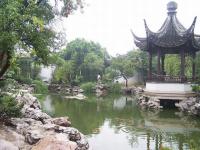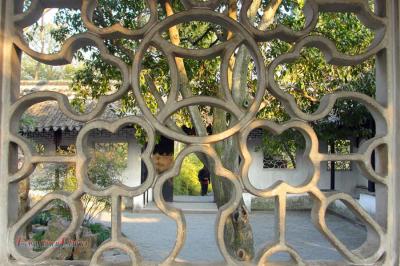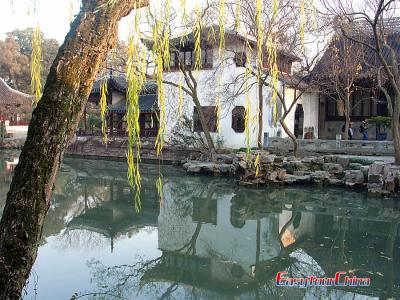Suzhou Introduction
 Located at the lower reach of Yangtze River, and neighboring with Tai Lake, Suzhou of Jiangsu Province is only about 100 km to Shanghai. The city is well known for its resplendent gardens and beautiful scenery, covering an area of 5,838 square kilometers with a population of 6.35 million. Suzhou has also been an important silk industry since the Song Dynasty (960-1279), and continues to hold that prominent position today.
Located at the lower reach of Yangtze River, and neighboring with Tai Lake, Suzhou of Jiangsu Province is only about 100 km to Shanghai. The city is well known for its resplendent gardens and beautiful scenery, covering an area of 5,838 square kilometers with a population of 6.35 million. Suzhou has also been an important silk industry since the Song Dynasty (960-1279), and continues to hold that prominent position today. Suzhou used to be the capital of the Wu State during the Spring and Autumn Period (770-476 BC). In 514 BC, by the command of ruler Helu of Wu, his senior minister Wu Zixu built the Great City, and its wall measured 23.5 km in circumstances with 8 pairs of land and water gates. The city began to take the name of Suzhou and Gusu City during the Sui Dynasty (581-618). Great changes have take place in Suzhou through its long history. Yet, despite of repeated devastation, the city is still seated exactly on the original site, as it was 2,500 years ago, which is indeed an instance rarely found in the world.
Reputed as the "Venice of Orient", the old town of Sunzhou is still a city of canals, hump-backed bridges, and low, white washed houses. Over 100 surviving ancient gardens are scattered in the urban area. In 1997 the classical gardens including Humble Administrator's Garden, Garden of the Net Master, Pavilion of the Surging Wave, Lingering Garden and Lion Grove were added to the list of the UNESCO World Heritage Sites.
One of China's oldest art forms, embroidery has several styles that vary depending on the region in which they are produced. Suzhou is one of China's four major embroidery centers (others include Hunan, Guangdong and Sichuan), with works that are noted for their flat surface, neat edge, delicacy, and close, even stitches. Suzhou's Wuzhong and Xiangcheng districts alone have more than 100,000 craftspeople skilled in embroidery.
Suzhou is home to various schools of literature, painting and music, including Kunqu Opera (listed as one of the UNESCO's first batch 19 masterpieces of oral and intangible cultural heritage in 2001) and Suzhou Ballad Singing, making an important part of Chinese art and culture. Today's Suzhou is on the track of development and prosperity. Taking a panoramic view of Suzhou new district, skyscrapers and modern residential areas can be seen everywhere.


